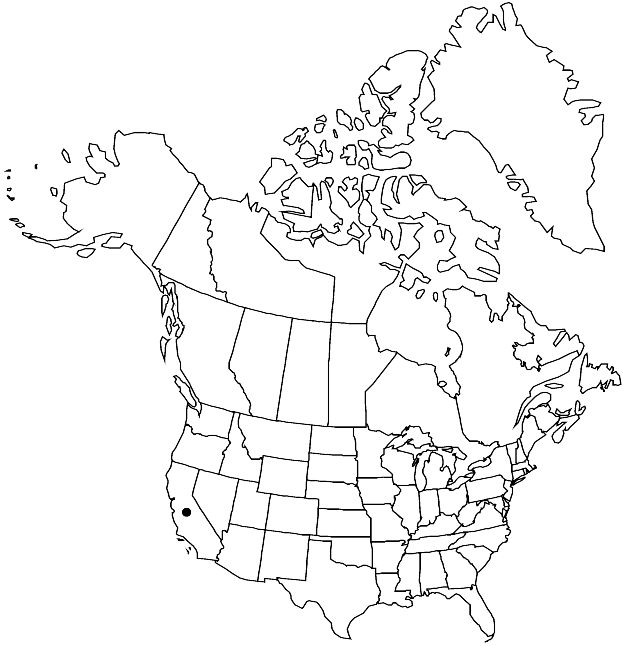Streptanthus vimineus
Novon 18: 281. 2008.
Annuals; (glaucous), usually glabrous throughout (sometimes sepals pubescent). Stems branched distal to base, 1–7.5 dm. Basal leaves (soon withered); not rosulate; petiolate; blade narrowly ovate to oblong, 2.5–5 cm, margins entire. Cauline leaves: blade linear to narrowly linear-lanceolate, 2–12 cm × 1–3(–4) mm, (smaller distally), base auriculate, margins entire. Racemes ebracteate, (lax, usually secund). Fruiting pedicels divaricate, (straight), 1–3(–6) mm. Flowers: calyx urceolate; sepals greenish to purplish, ovate-lanceolate, 6–8 mm, keeled, (apex recurved, usually glabrous, rarely sparsely pubescent); petals white (abaxial pair with purple veins), 8–12 mm, blade 3–5 × 2–3 mm, (unequal, abaxial longer than adaxial), margins not crisped, claw 5–7 mm, narrower than blade; stamens in 3 unequal pairs; filaments: abaxial pair (connate 1/2 their length), 4–7 mm, lateral pair 2–4 mm, adaxial pair (connate their whole length, recurved), 7–11 mm; anthers: abaxial and lateral pairs fertile, 2–2.7 mm, adaxial pairs sterile, 0.5–1.2 mm; gynophore 0.2–0.5 mm. Fruits divaricate, slightly torulose, recurved, flattened, 3.5–6.5 cm × 1–1.2 mm; valves each with obscure midvein; replum straight; ovules 28–40 per ovary; style 0.1–0.3 mm; stigma entire. Seeds narrowly oblong, 1–1.5 × 0.6–0.8 mm; wing 0–0.1 mm wide, distal.
Phenology: Flowering May–Jul.
Habitat: Serpentine grasslands, ridges and barrens, openings in chaparral
Elevation: 200-800 m
Discussion
Of conservation concern.
Streptanthus vimineus is restricted to Colusa, Lake, and Napa counties. The taxon has long been unrecognized by various authors, including recent ones (e.g., R. C. Rollins 1993; R. E. Buck et al. 1993). It remained under Mesoreanthus and was often treated as a synonym of S. barbiger. The latter always has non-auriculate (versus auriculate) cauline leaves.
Selected References
None.
